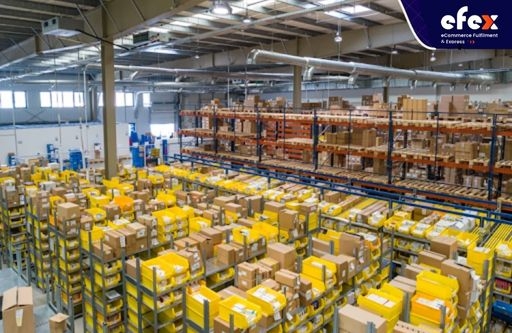
E-commerce has dramatically increased over the past years, and the market is likely to expand further. Operating an e-commerce business has several distinct characteristics that set it apart from other types of businesses. One such necessity, which is often overlooked, is where to keep e-commerce merchandise and how to properly manage it.
Some companies employ traditional warehouses. Although this still works, standard warehouses are not designed to handle the unique needs of e-commerce, which will lead to a bad impact on your efficiency, productivity, and cost you greater than required.
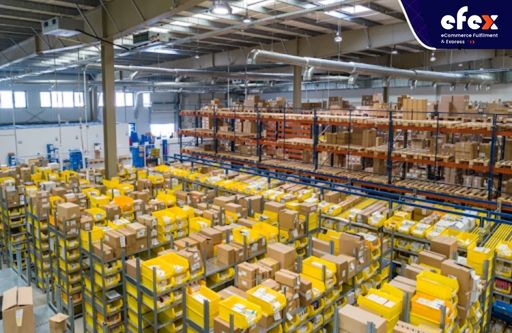
As a result, many e-commerce businesses choose to employ specialized eCommerce warehousing and e-commerce warehouse systems for their operations. In this article, we will explain e-commerce warehouses, as well as the various types of them, how they may benefit you, and what factors you should consider when choosing an external e-commerce warehouse.
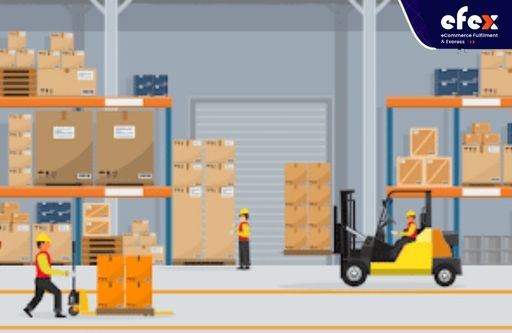
The technique of storing items expressly for sale online is referred to as e-commerce warehousing. In addition, e-commerce warehouse management includes all of the operations required in running an e-commerce warehouse, like:
👉 Read More: What Is Warehouse Management In Logistics? Benefit And Challenges
👉 Read More: What Is Warehouse Control System (Wcs)?
E-commerce warehouses encompass all of the many types of warehouses that may be utilized to meet the storage needs of an e-commerce organization. To function smoothly, e-commerce inventory should be stored in an ideal e-commerce warehouse, although this still provides a variety of different types for you to pick from.
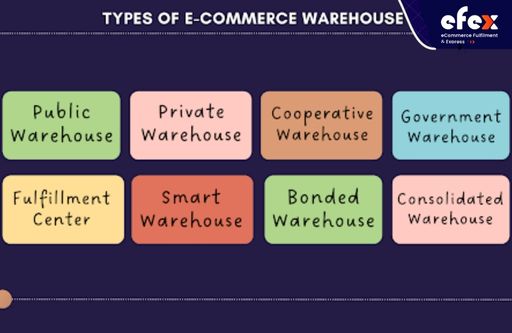
Public warehouses are often owned by government agencies and leased to corporations, therefore, their tariffs and facilities are entirely set by the company. They are less sophisticated in regards to size and capability than private warehouses, but they are far less expensive. Public warehouses are an excellent option for e-commerce firms with short-term storage needs.
Private warehouses are those that are often controlled by larger corporations. This covers wholesalers, manufacturers, huge retailers, distributors, and online marketplaces in e-commerce. They are more expensive to buy or rent than public warehouses since they are designed to meet the individual demands of the owner or user.
This may involve the warehouse’s capacity, the specific facilities provided such as an upgraded warehouse management system, or the manner the warehouse was structured to hold specific sorts of items. For example, private warehouses around the sea area can be built with freezers for seafood storage. The long-term advantages of this type of warehouse make it desirable to invest in, making it the ideal choice for e-commerce SMBs, wholesalers, and private distributors.

Cooperative warehouses are held by numerous enterprises that are involved in comparable industries or goods and hence have similar storage requirements. They are essentially a private warehouse with many owners. Members who operate in slightly different fields but collaborate on a shared project can also utilize cooperative warehouses.
Storage sharing applies to the fee paid as well, so every member will only need to pay a portion of the total amount. Non-members can usually utilize the warehouse, albeit at a greater cost. Cooperative warehouses are an excellent option for e-commerce enterprises that work in collaboration with other businesses.
Government warehouses or government-owned warehouses are comparable to public warehouses in that they are owned and controlled solely by the government. They are often quite secure, making them one of the finest options for storing expensive e-commerce merchandise.
These storage facilities, sometimes known as distribution centers, are designed to meet specific needs. Because things move quickly across the supply chain, storage in fulfillment centers is frequently temporary. The fulfillment center gets a huge quantity of merchandise and distributes it to wholesalers and merchants within a few days.
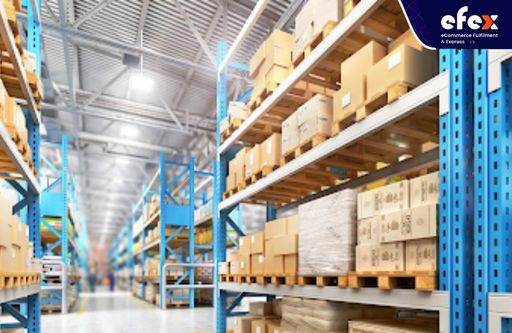
In the situation of perishable things, the commodities are usually delivered within a day. Distribution centers have low-cost leases. They can, though, vary greatly depending on the things housed there.
Smart warehouses are sophisticated warehouses that employ artificial intelligence which is known as AI to aid with storage, fulfillment, and management. Unlike with other warehouse types, automation in a smart warehouse is not restricted to software. Instead, it may have technology such as drones, automated trucks and carts, robotic arms, and AS/AR (Automated Storage and Retrieval Systems).
It can provide tremendous effectiveness and productivity because the majority of the labor is done by machines. However, it certainly comes at a premium cost. Amazon’s fulfillment facilities are a well-known example of smart e-commerce warehouses. To assist its fulfillment processes to run efficiently, Amazon employs a variety of smart equipment, such as robotic arms, smartphone apps, conveyor belts, picking robots, and scanning technologies.
Bonded warehouses are another warehouse type that is owned by the government. They are designed exclusively for importing companies that require a location to hold their items until they can pay customs fees on them. Normally, firms must pay customs charges on imported items immediately after delivery. Rather, storing the items in a bonded warehouse allows the owner to pay only after the commodities are removed from the warehouse.
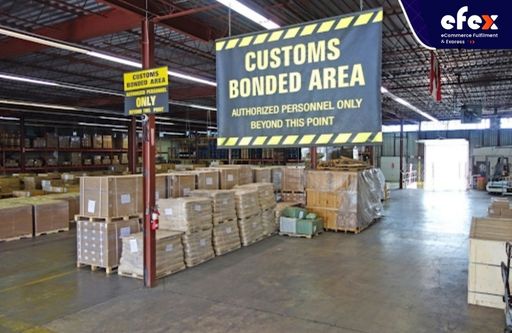
These warehouses are beneficial for importers because they allow them to retain products duty-free until they find a buyer. They are well-known for their safety and security, making them a perfect choice for e-commerce enterprises that do cross-border trade.
Consolidated warehouses combine minor shipments from several suppliers into bigger shipments before distributing them to customers. Because all shipments must be in the same geographic location, this is not usually a good option for e-commerce vendors.
having your merchandise stored in an external e-commerce warehouse may be quite useful. By partnering with an experienced 3PL, online retailers get access to a variety of external e-commerce warehouses. These cutting-edge fulfillment facilities may be utilized to save transportation costs and accelerate delivery times. Here are some of the benefits of outsourcing the e-commerce warehouse to professionals.
Preparing orders one by one at a time and delivering them yourself takes time. Utilizing e-commerce warehousing avoids the trouble of holding your items in your garage while also taking care of the rest. You only need to take care of getting your goods to the warehouse when you use an external e-commerce warehouse.

Initially, keeping piles of boxes in your garage appears to be a wonderful idea. However, the more orders you choose and package, the more likely you are to lose control of exactly where everything is and where it needs to be, whereas reorganizing every item will be difficult, and it may not even be feasible if space is restricted.
With an external e-commerce warehouse, you will have a better time handling everything including tracking inventory to client orders if you have more room and a better organizing system. A 3PL provider may take over the time-consuming inventory management procedure and keep track of your items for you. You will have more reliable information on inventory status. You are also less prone to misplace goods and have a greater grasp of your inventory turnover rates, allowing you to reorder more effectively.
3PL services offer warehouse picking and packaging, which relieves you of most of the fulfillment process. They have highly skilled personnel at each stage of the order fulfillment process, as well as others who seek to find supply chain efficiencies. Their technologies and processes assist in ensuring that the proper items are packed and on time delivered to provide a positive customer experience.
It is unrealistic to expect a small e-commerce business to deliver the same rapid and free shipping as Amazon does, but buyers typically don’t care if you are not a large-scale business. Using the power of external warehouses guarantees that your clients receive their items more quickly.
Orders are collected in groups rather than individually and are always shipped from the nearest distribution facility. Besides, you will also be able to benefit from bulk shipping savings, which will help you keep e-commerce shipping expenses under control.

Developing your business successfully takes a tremendous amount of time, effort, and resources. You will not get mired down in the technicalities of e-commerce warehousing if you choose a 3PL service. Otherwise, you may devote your time and resources to other tasks such as developing your consumer base. Even your e-commerce warehouse may contribute to development.
E-commerce warehousing is more than just having a place to keep your products. It involves coming up with packing ideas, shipping, inventory management, re-ordering, and so on. That would be a great deal to take care of. You can concentrate on other elements of your business, such as marketing campaigns and customer support once you outsource it all to an e-commerce warehouse management service.
👉 Read More: All Cost To Rent A Warehouse In 2023
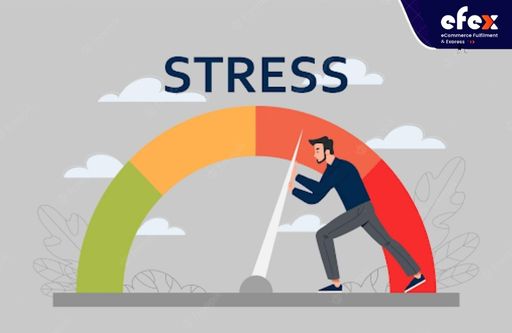
Whatever e-commerce warehouse type you choose, there are a few best practices to think about if you want your business to function well. Poor e-commerce storage practices cost money and may even cause orders to be delayed. Investing resources in good warehouse management, in contrast, enhances customer experience and, eventually, income. Implement the following suggestions for a good warehouse management approach.
This sophisticated software monitors and regulates warehouse operations daily. It includes providing real-time information on product availability and stock levels, e-commerce supply chain management, inventory prediction, and a streamlined order fulfillment process.
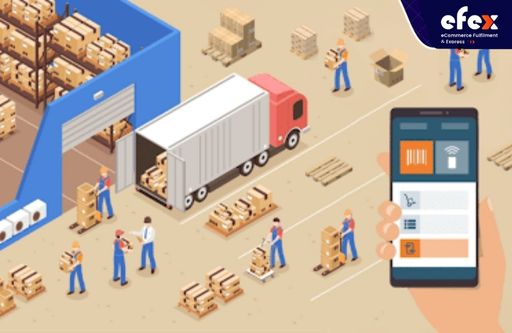
It helps you to optimize your entire workflow. You can automate processes like sending shipping alerts and order notifications to the buyers, ordering more inventory before things run out of supply, and controlling inventory across numerous sales channels.
Distribute your items to numerous warehouse sites around the country so that clients may receive their products from the nearest warehouse feasible. It not only guarantees that clients receive their items more quickly and enhances the customer experience, but it also aids in lowering e-commerce shipping fees.
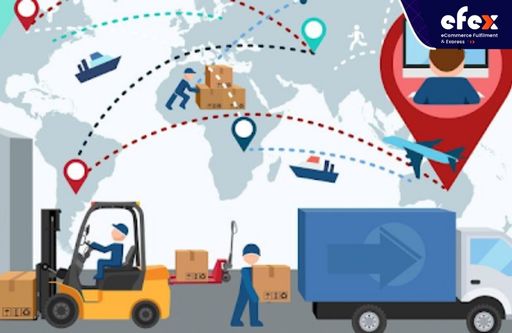
Determining inventory balance is typically one of the most challenging tasks in business. It is very hard to forecast the amount of inventory you will need when you are just getting started and don’t have any past data to rely on.
On the other hand, you will not want to stock too much and you can lose a lot of money since you cannot sell it. It might also increase your inventory carrying expenses because you must pay for storing space to store the goods.
Otherwise, you also will not want to have less inventory which can cause stockout and loss of sales. If this occurs too frequently, you may irritate clients, and they may be unwilling to return and give you another opportunity. Setting inventory minimums comes in handy here.
Once inventory reaches a specific level, the WMS will make a new order automatically. By the time the final stock sells, you will have the additional products ready for buyers, or in the worst situation, they are on their way to your warehouse. There is always the possibility that goods will be sold more quickly than expected due to changes in demand. But this precaution guards against long-term stockout situations.
There will be plenty of alternatives available to you. If you only receive a few orders each day, a one-at-a-time method may be appropriate. However, for developing businesses and larger activities, this is neither realistic nor efficient. Auto-generated picking lists and batch-picking are made feasible by advanced technologies.

Numerous reputable third-party logistics fulfillment centers provide these operational elements as standard for direct-to-consumer e-commerce enterprises. While the majority of these fulfillment and warehousing firms may be readily linked with your selected e-commerce platform, it is recommended to perform your own extensive study to identify the ideal one for your company model.
You can decide what is best suited for your organization and order quantity by experimenting with different methods. Your ultimate option should be the one that can expand and grow with your company.

Quality warehouses are more than simply structures to keep your items, regardless of the type of e-commerce warehouse or inventory management technique like LIFO, LILO, etc. you pick for your firm. Look for the following characteristics in your provider:
E-commerce enterprises have distinct needs and operations and eCommerce warehouses might be difficult. However, using the right e-commerce warehouse management system may significantly streamline your operations and enhance your capacity to handle fluctuating demand, high return volume, single-item orders, and so on.
